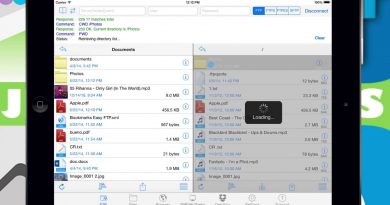What is the Difference Between POP and IMAP? | GoDaddy
Learn the difference between the two most common incoming email protocols: POP and IMAP.For more details visit https://www.godaddy.com/help/setting-up-your-email-address-with-pop-4715?cvosrc=video.youtube_organic.us_how-to&cvo_creative=MlvksPMunQ0isc=ythowto and https://www.godaddy.com/help/setting-up-your-email-address-with-imap-4714?cvosrc=video.youtube_organic.us_how-to&cvo_creative=MlvksPMunQ0isc=ythowto
Hi there! In this video, you’ll learn the difference between the two most common incoming email protocols: POP and IMAP.
POP, or Post Office Protocol, was created as a simplified way to download and delete messages on a remote email server. The latest version, POP3, is supported by virtually all email clients and servers.
Using POP, an internet-connected email client accesses a remote mail server; downloads all email to your local computer; and marks the messages for deletion on the mail server.
This means the messages you retrieve using POP can only be viewed in the specific email client, on the specific computer that you downloaded them to. Once downloaded, you cannot access these messages via webmail, or a different email client on another computer.
Think of POP like a traditional telephone answering machine that uses tapes. Callers can leave a recorded message on the answering machine, but you can only listen to the message if you are physically in the same room as your answering machine and press play.
Until you erase your messages from the tape, they remain available to replay at any time, but only from that answering machine.
IMAP, or Internet Message Access Protocol, was specifically designed to free us from the limits of sending and receiving email from a single email client.
In contrast to POP, IMAP allows you to log into any internet-connected email client or a webmail site, and view all of the same emails at any time.
In a constantly connected world, the ability to send and receive email from both email clients and webmail sites, has made IMAP very popular.
With IMAP, your email is stored on your provider’s email servers until you delete it. While this makes email access convenient, some provider’s limit the amount of email you can store on their servers, and may temporarily suspend email services if you exceed this amount.
Think of IMAP like your remote digital voicemail. When a caller leaves a message using voicemail, their message is kept on a centralized computer data storage device, and you access the messages using the touch tones on your telephone or mobile.
This digital storage in a centralized location means that you can access and listen to voicemails from any telephonic device that can generate touch tones. Your messages remain on your provider’s data storage device until you delete them.
However, most providers limit the number of messages you can store, and if you exceed this amount, callers may temporarily not be able to leave you a message.
To decide which will work best for you, think about how you like to check your email.
If you’re someone who always checks their email from one location, or on only one device, POP will work.
However, if you’re someone who checks your email from your laptop, just as frequently as your mobile, and you need to be able to access it no matter where you, then IMAP is a better choice.
While POP and IMAP are not the only incoming email server settings, they are the most common.
At GoDaddy, the type of incoming email server you have is primarily dependent on the type of email account you have and where you purchased it.
So find out which type of incoming email server you’re using – and if it’s not meeting your needs you always have the option to change it.
by GoDaddy
linux smtp server



